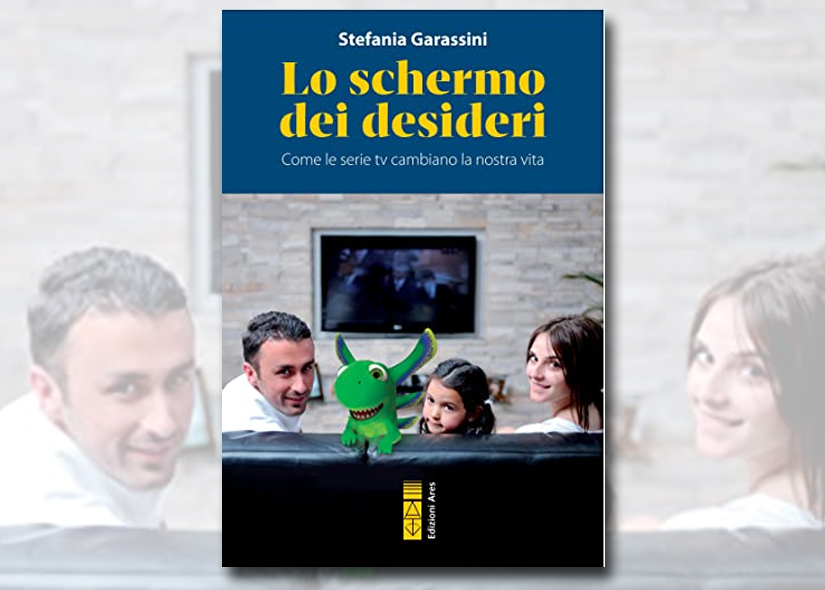Choosing a Movie
Choosing a Movie 2012 (Scegliere un film 21012) (edited by Armando
Fumagalli, Luisa Cotta Ramosino), Ares Editions, Milan 2012.
Cinematically speaking, the last season will be remembered as the
season of superheroes: Captain America, The Avengers, Batman,
Spiderman…perhaps even Mission Impossible IV and Sherlock Holmes II ,
two of the greatest successes, could be included alongside the first
episode of Hunger Games, a new series created for young people. Each of
them are high-adrenaline productions that offer stories with strong
emotional impact, that nevertheless are not without values.
This year in American film however, has also offered serious and
ambitious films, most notable being The Ides of March (about
the world of politics and its compromises), Margin Call (the
fascinating story about the origins of the global economic crisis),Moneyball (a true story set in the world of baseball), and The Help (that uses personal experience to tell the story of
the battle against racism in the 1960s.)
So explain Armando Fumagalli and Luisa Cotta Ramosino in their
introduction to Choosing a Movie, which gathers together the
most important titles from September 2011 to June 2012. The book will
appeal to movie lovers in general, but is particularly useful for
anyone choosing films in educational contexts (schools, youth groups,
associations and parishes, etc.) and for parents trying to choose
movies that can be enjoyed as a family.
According to the editors, the European stage was full of pleasant
surprises, such as the two big French hits The Artist and Intouchables. There were also a handful of titles interesting
both for their artistic profile and their values: Le Havre by
the Finnish director Kaurmismaki, Sister from the Swiss Meier,
and All Our Desires and Declaration of War from the
French Lioret and Donzelli respectively. The First Man,
co-produced by Gianni Amelio (Italy), is also worthwhile, offering
“small stories that are valuable in showing humanity touched by pain,
but not without hope.” Other titles to consider are the Iranian A Separation, winner of the Oscar for Best Foreign Film, and
the Argentinian Chinese Take-Away, winner of the Critics’ and
People’s Choice Awards at the Rome Film Festival. Passing too quickly
through theatres, this film “deserves to be recovered because of the
intelligent and positive light it throws on man.” On the other hand, in
a year without any Pixar productions, there were still a group of
animated films capable of uniting both parents and children: Arthur Christmas and Castle in the Sky, yet another
masterpiece by Miyazaki, are a few examples.
Meanwhile in Italy, there were setbacks in terms of box office, but
especially in terms of ideas and the capacity for renewal. According to
the book’s authors, once again “the titles that caught the public’s
attention were made with ideas already experimented with, like Welcome to the North or Immaturi 2: Il Viaggio, with
little or nothing added to the originals.” One exception is Caesar Must Die by the Taviani brothers. A movie with civic
commitment, and winner of the Berlin Festival, it is fascinating and
powerful with a cast of prisoners.
This volume has been published by Ares since 2004, and is aimed at a
public that is learned and open, but not specialized. The movies are
rated with one to five stars, taking account of merit in both form and
content. The reviews are accurate and well written. They serve to
direct movie choices as well as to help reflect about movies that have
already been seen. They are useful for both youth groups and skilled
authors such as screen-play writers, story editors, teachers, and
scholars in the field.
The criteria guiding their work are above all the importance attributed
to a movie’s narrative elements (story-lines, characters, and the
values that both of these imply) and a point of view rooted in
Christian anthropology. Even more useful are the explicit guidelines
concerning problematic elements (erotic or nude scenes, violence,
horror, vulgar language, drug-use or the inordinate use of alcohol,
etc.) that are attached to the end of the work. It also includes lists
of the best movies for everyone and for the youngest viewers, meant for
discussion. It is true that the reviews in Choosing a Movie
are often “previewed” on the website
www.familycinematv.it
, but it is more than worthwhile to have all of them together, at hand
in a well-edited book.














